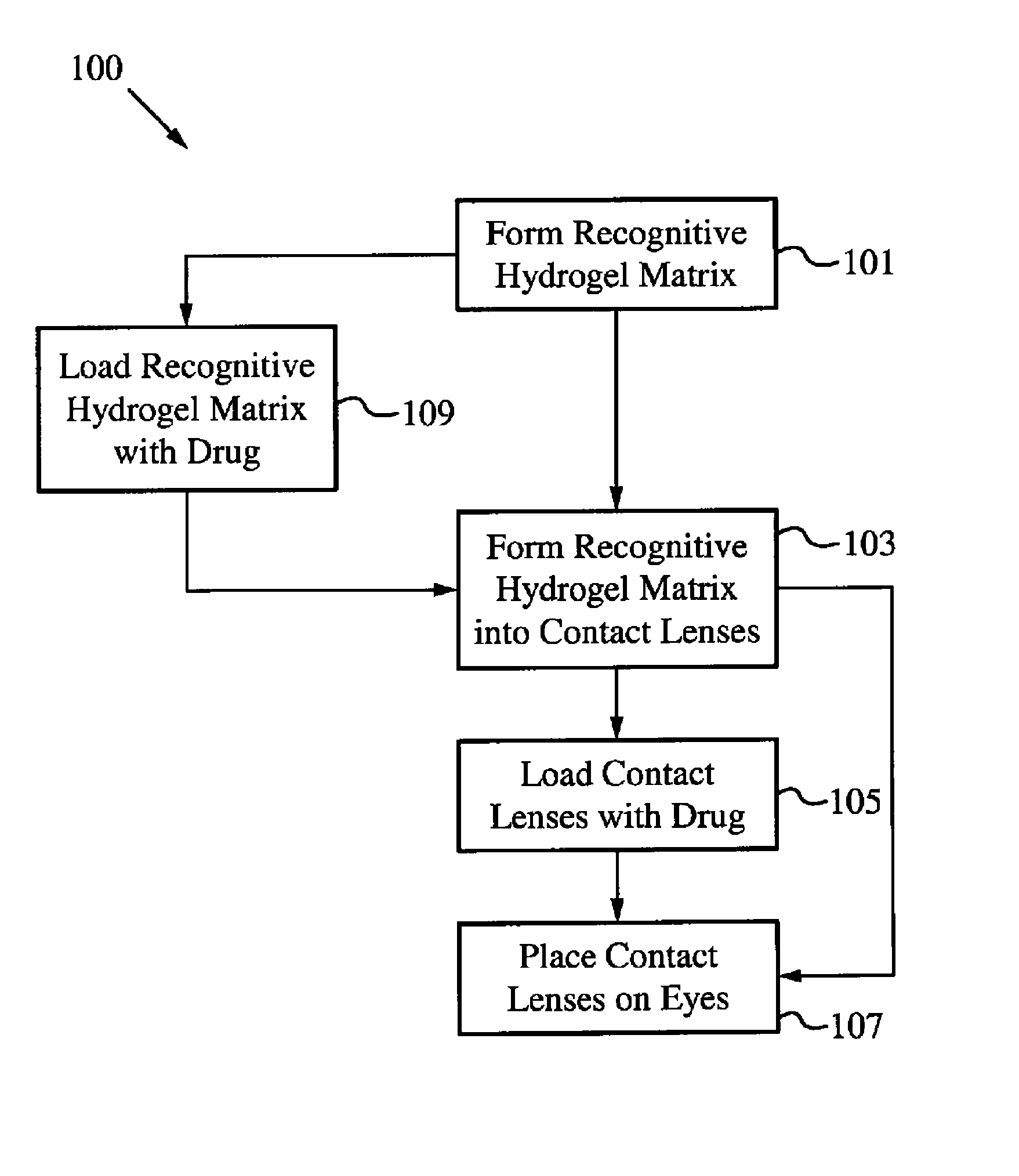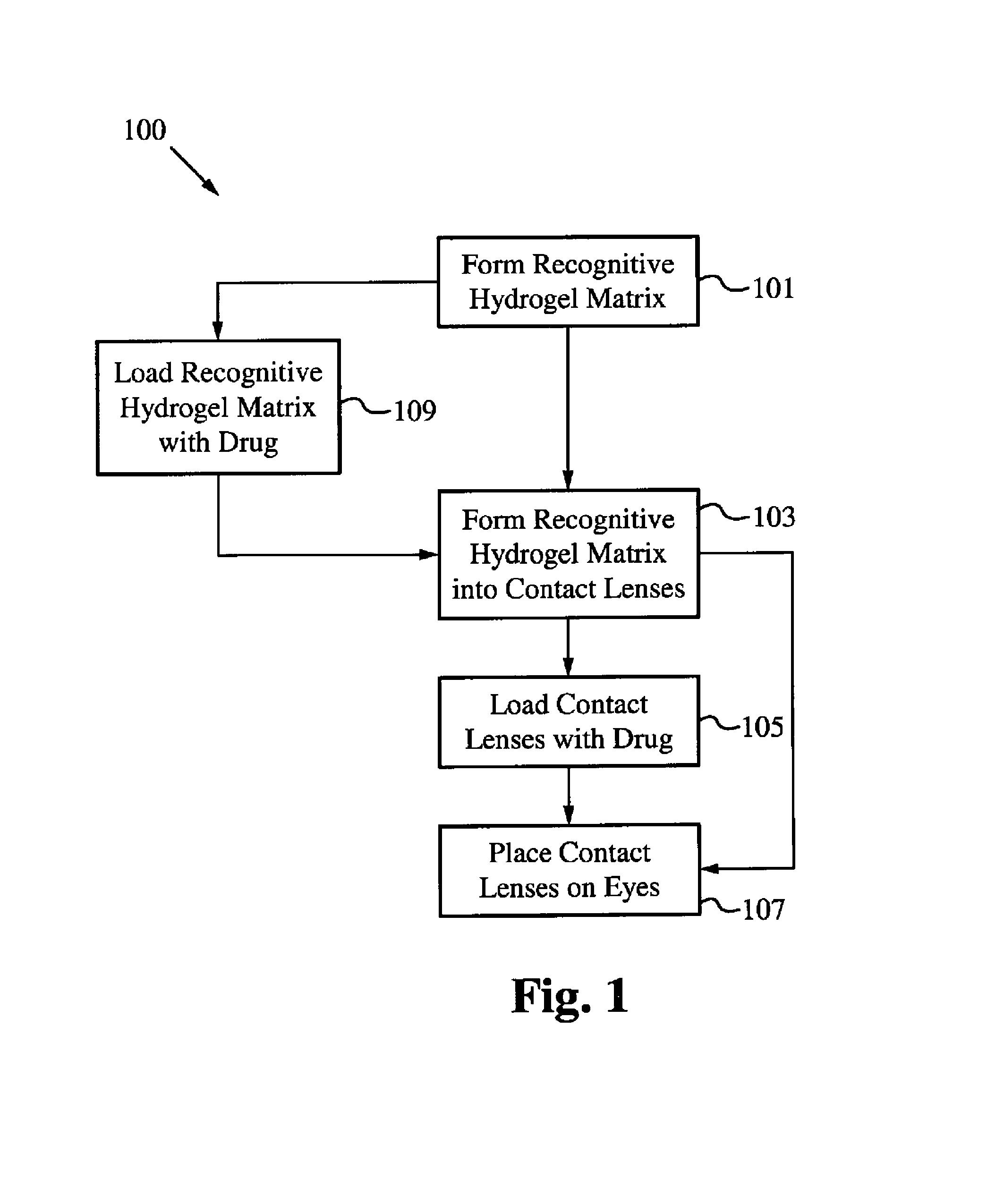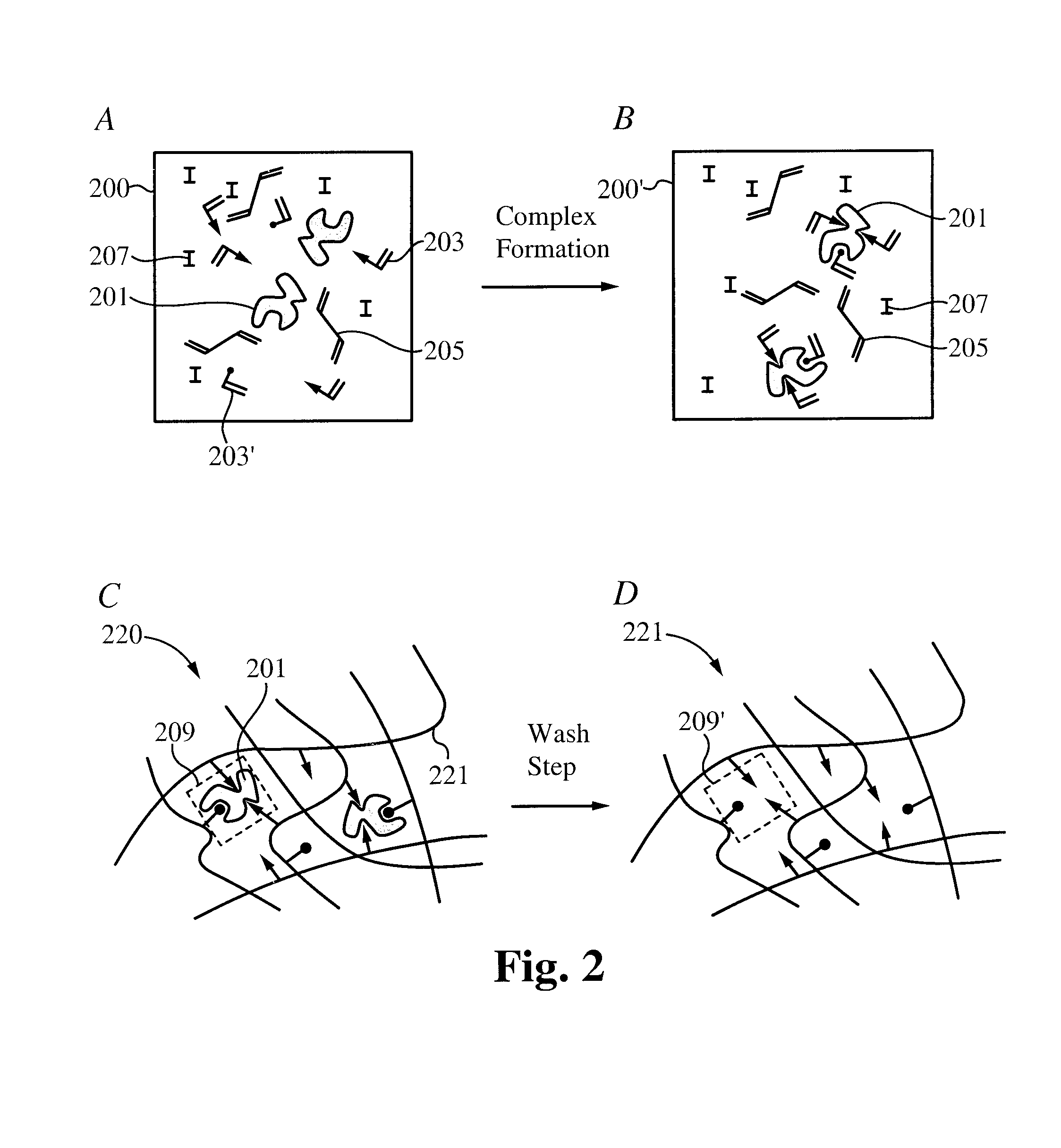Controlled and extended delivery of hyaluronic acid and comfort molecules via a contact lens platform
a technology of comfort molecules and contact lenses, which is applied in the field of time-released ophthalmic drug delivery systems, can solve the problems of inconvenient use, inconvenient use, and inability to meet the needs of patients, and achieve the effects of improving the bioavailability, increasing the contact time, and reducing the cost of treatmen
- Summary
- Abstract
- Description
- Claims
- Application Information
AI Technical Summary
Benefits of technology
Problems solved by technology
Method used
Image
Examples
example
[0086]Materials and Methods:
[0087]Acrylic Acid (AA), Acrylamide (AM), N-Vinyl-2-Pyrrolidone (NVP) and 2-hydroxyethylmethacrylate (HEMA), Azobisisobutyronitrile (AIBN), and Ketotifen Fumarate were purchased from Sigma-Aldrich. Polyethylene glycol (200) dimethacrylate (PEG200DMA) was purchased from Polysciences, Inc. All chemicals were used as received. Polymer and copolymer networks were made using various mixtures of above monomers (e.g. Poly(AA-co-AM-HEMA-PEG200DMA), Poly (AA-co-HEMA-co-PEG200DMA), Poly (AM-co-HEMA-co-PEG200DMA), Poly(AA-co-AM-co-NVP-co-HEMA-PEG200DMA)). Current work is directed to producing networks that can also be used in the formation of contact lens for anti-histamines with monomers and copolymers of molecules such as N-vinyl 2-pyrrolidone (NVP), 1-vinyl-2-pyrrolidone (VP), methyl methacrylate (MMA), methacrylic acid (MAA), acetone acrylamide, ethylene glycol dimethacrylate (EGDMA), 2-ethyl-2-(hydroxymethyl)-1,3-propanediol trimethacrylate, N-(1,1-dimethyl-3-o...
PUM
| Property | Measurement | Unit |
|---|---|---|
| Fraction | aaaaa | aaaaa |
| Biological properties | aaaaa | aaaaa |
Abstract
Description
Claims
Application Information
 Login to View More
Login to View More - R&D
- Intellectual Property
- Life Sciences
- Materials
- Tech Scout
- Unparalleled Data Quality
- Higher Quality Content
- 60% Fewer Hallucinations
Browse by: Latest US Patents, China's latest patents, Technical Efficacy Thesaurus, Application Domain, Technology Topic, Popular Technical Reports.
© 2025 PatSnap. All rights reserved.Legal|Privacy policy|Modern Slavery Act Transparency Statement|Sitemap|About US| Contact US: help@patsnap.com



